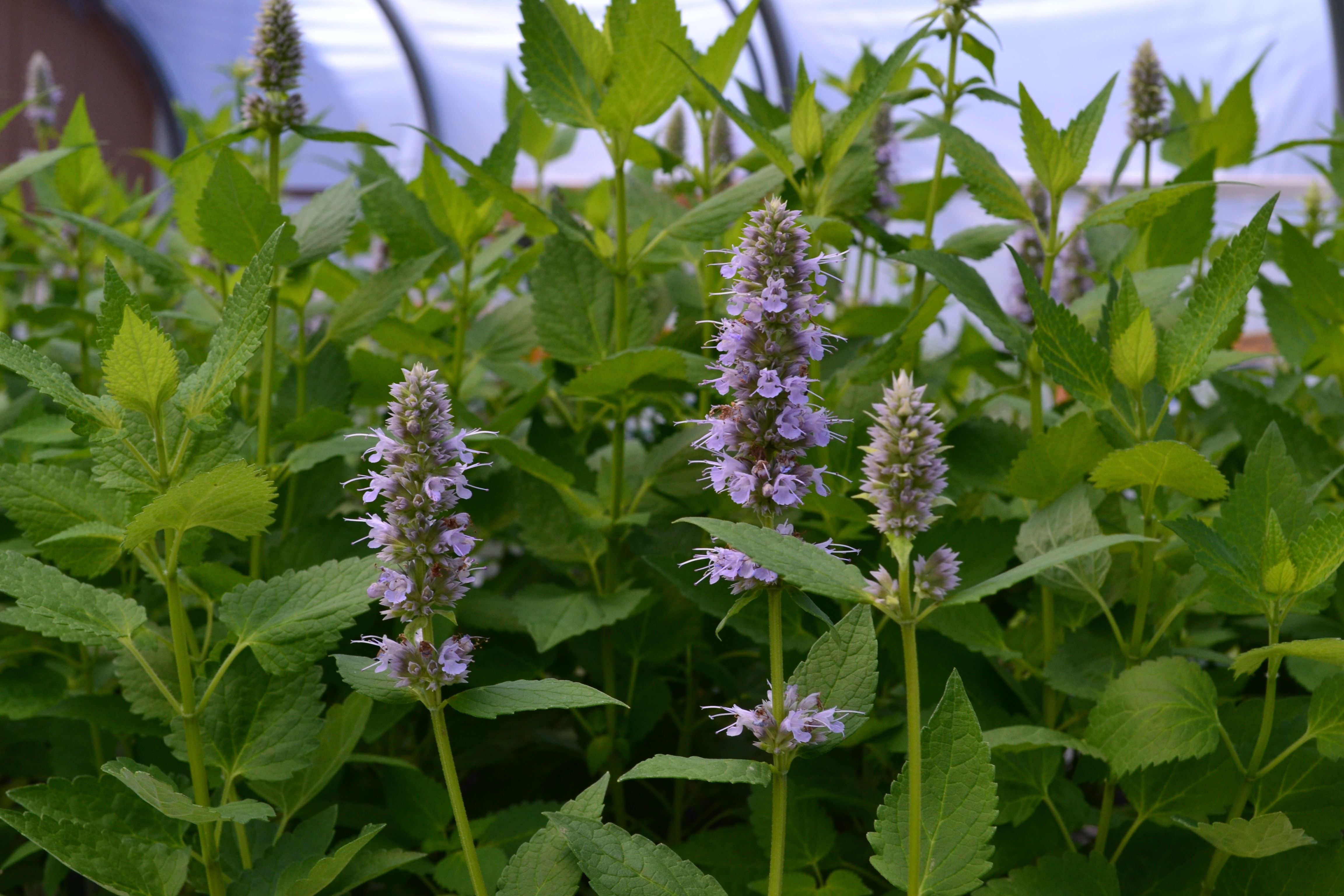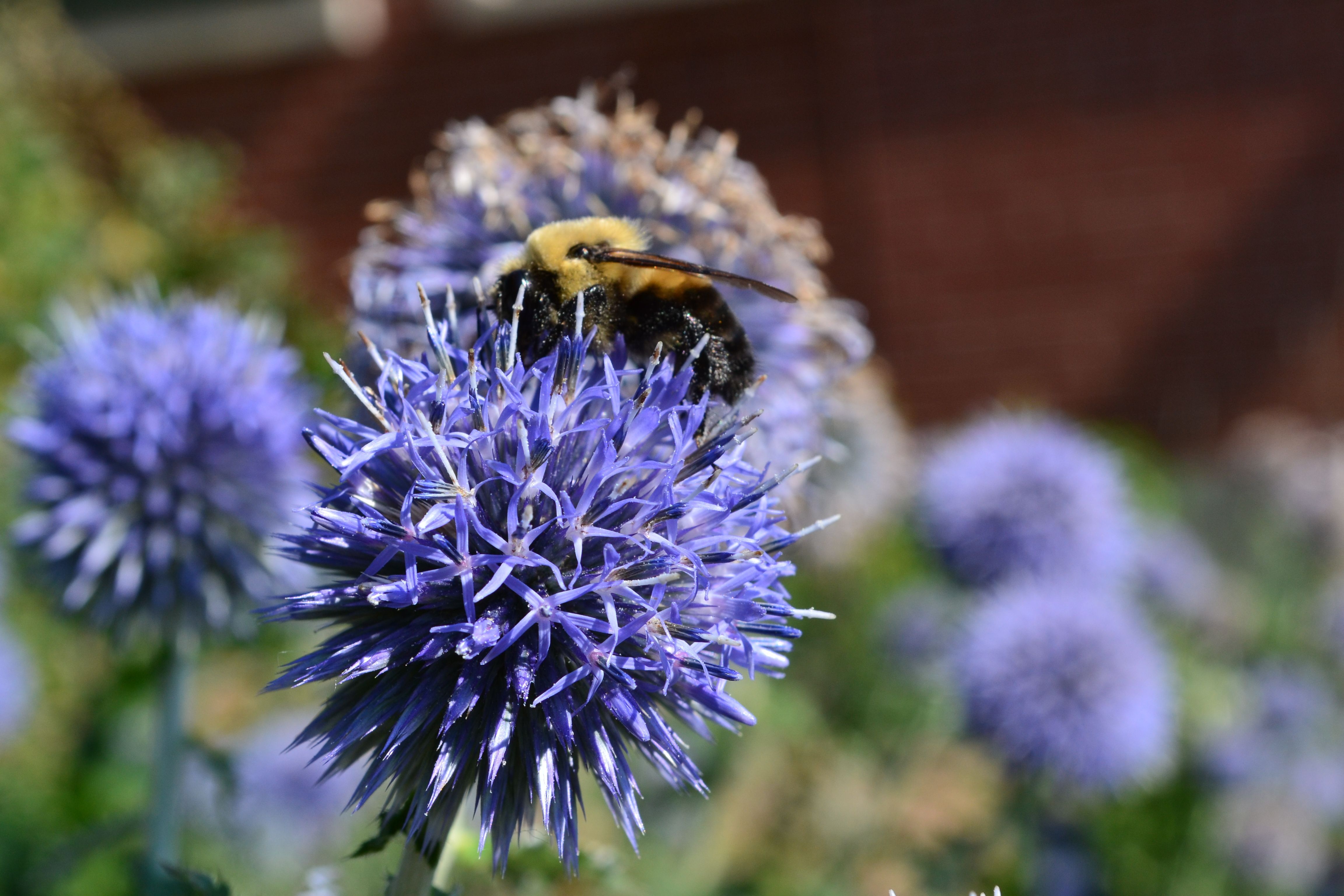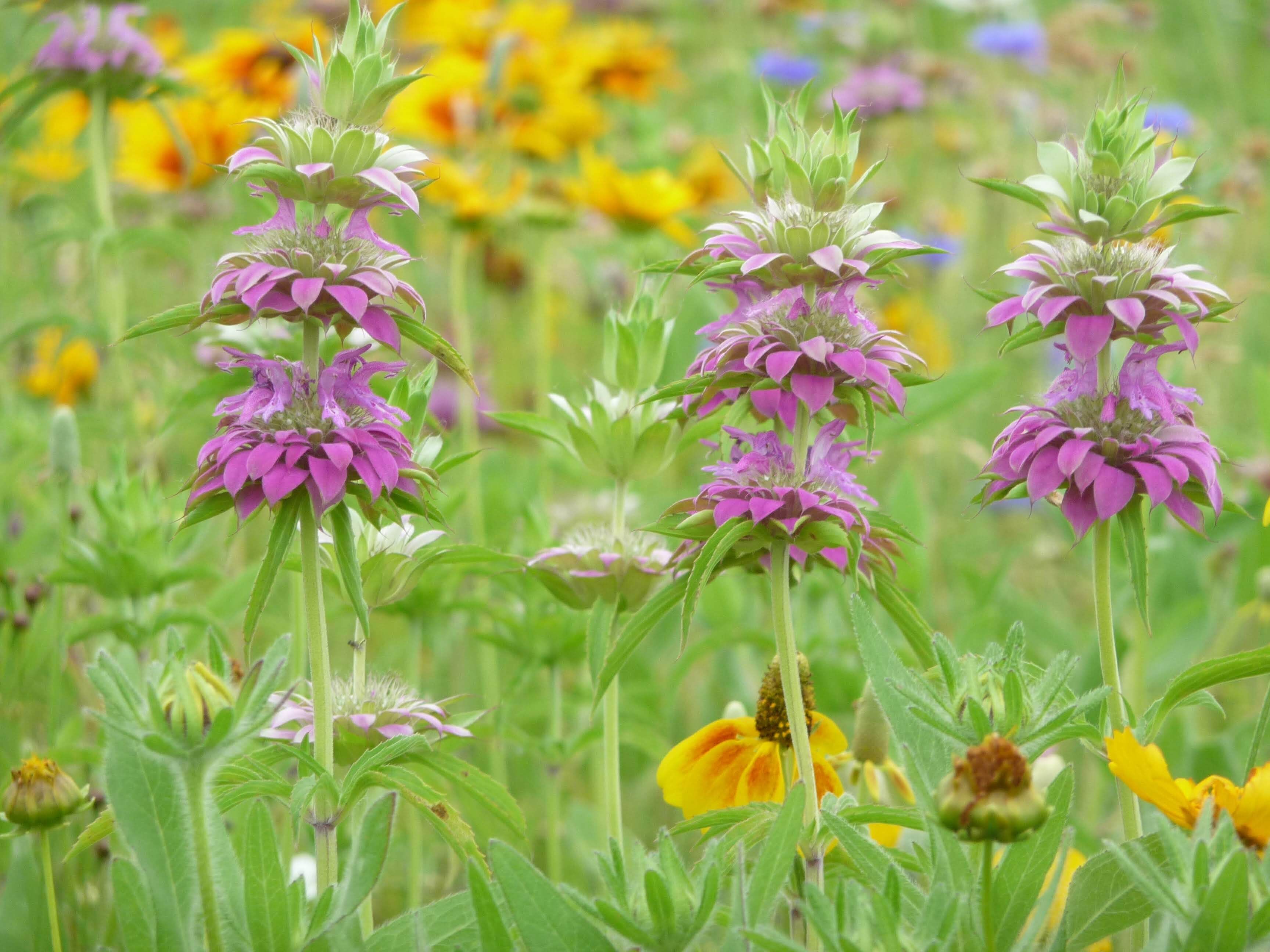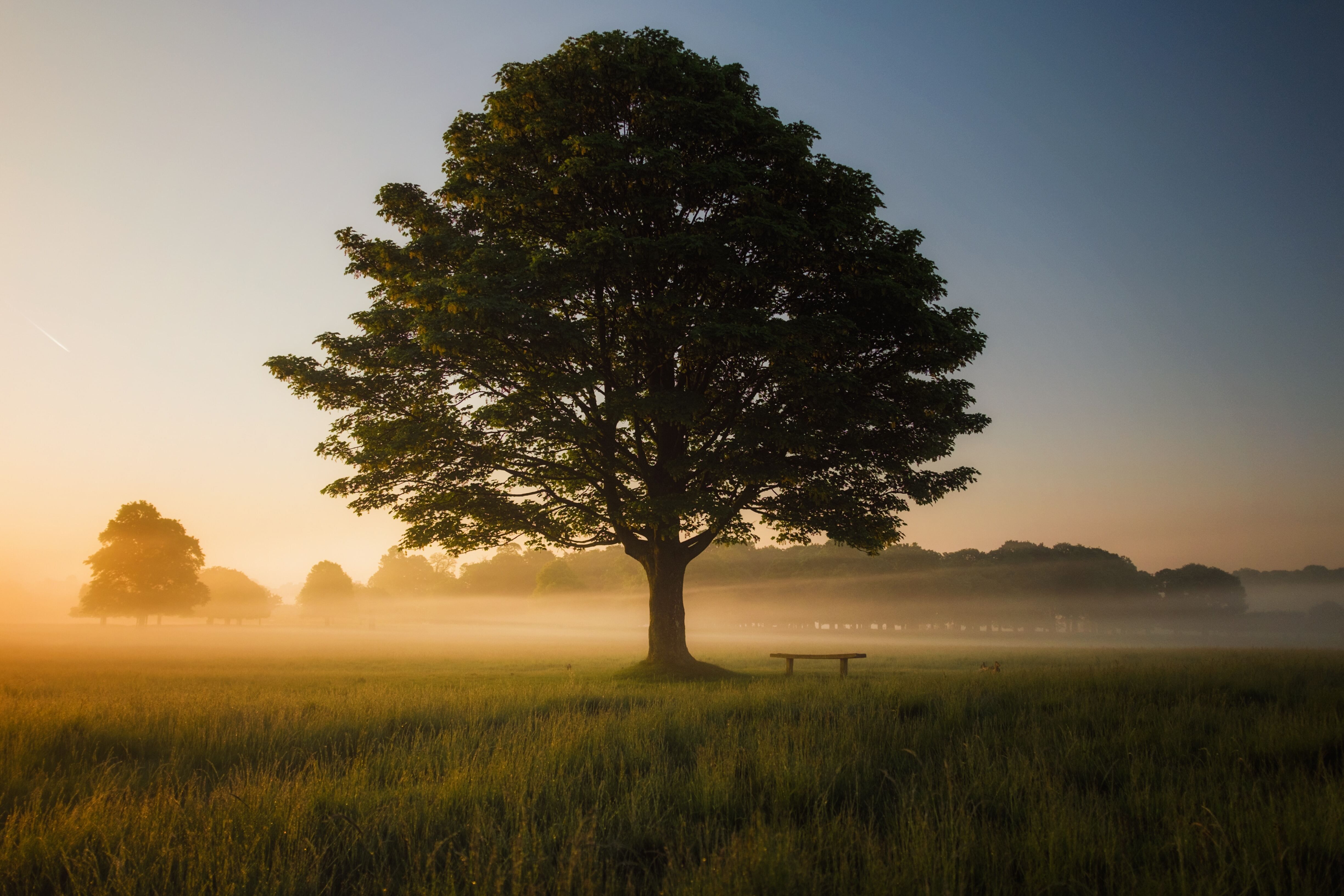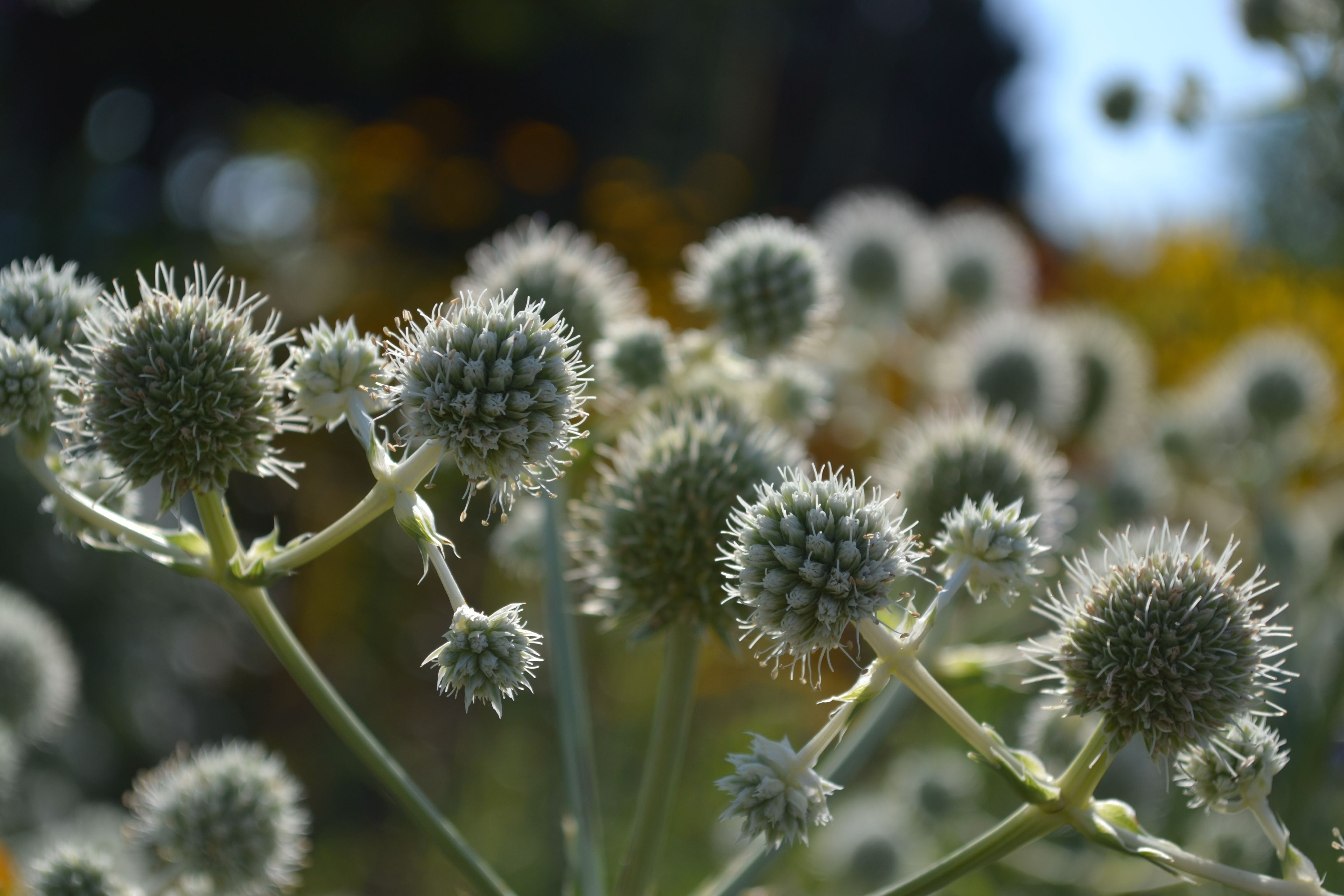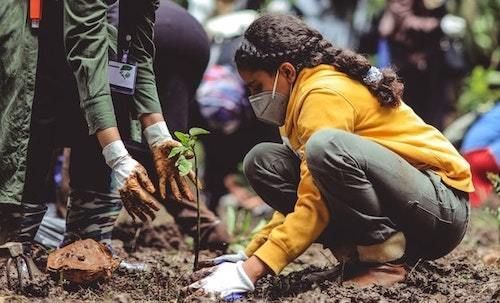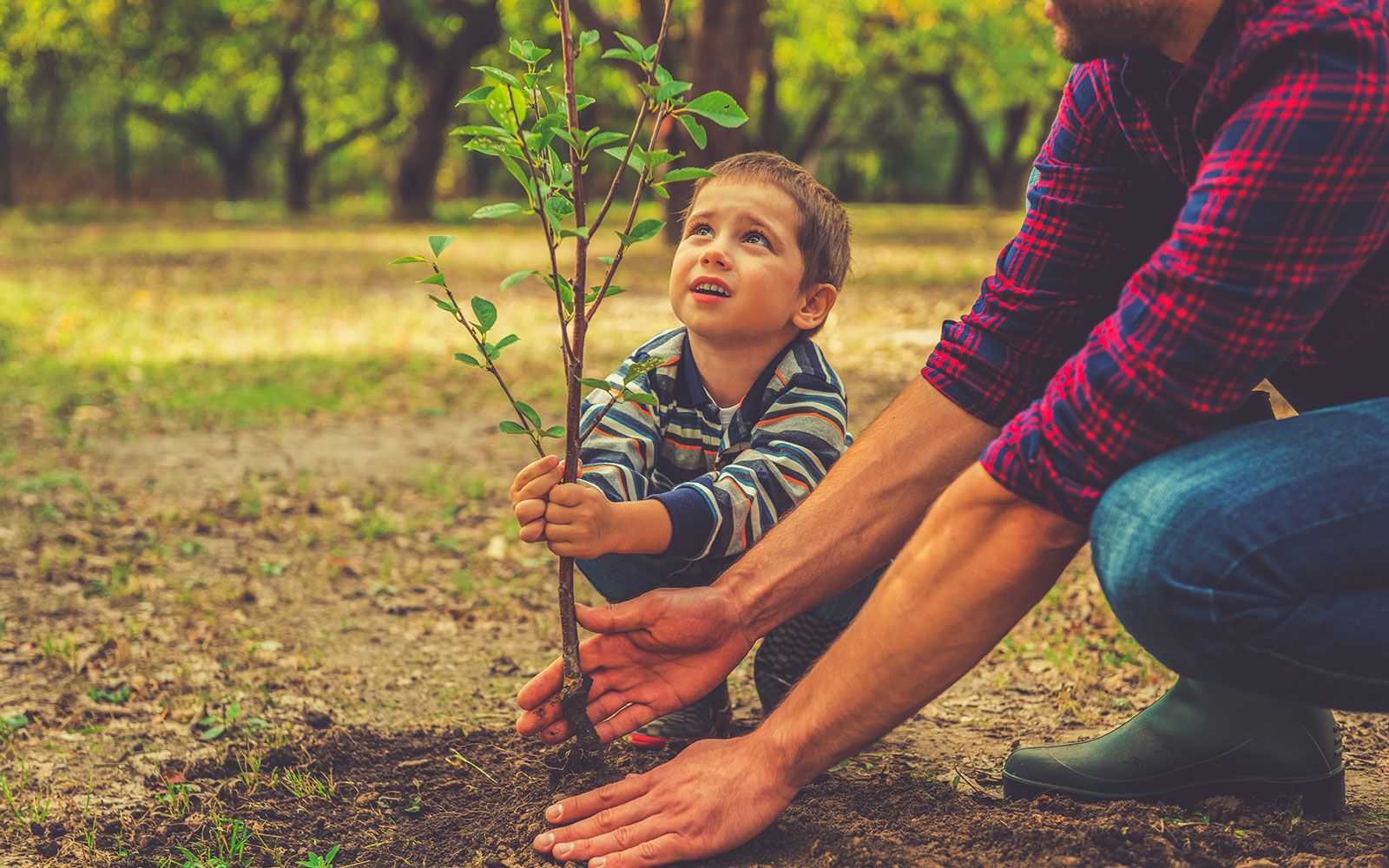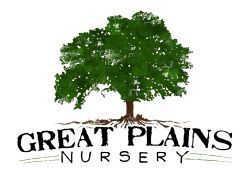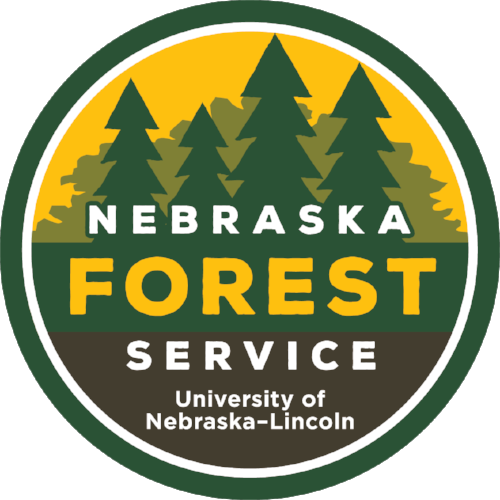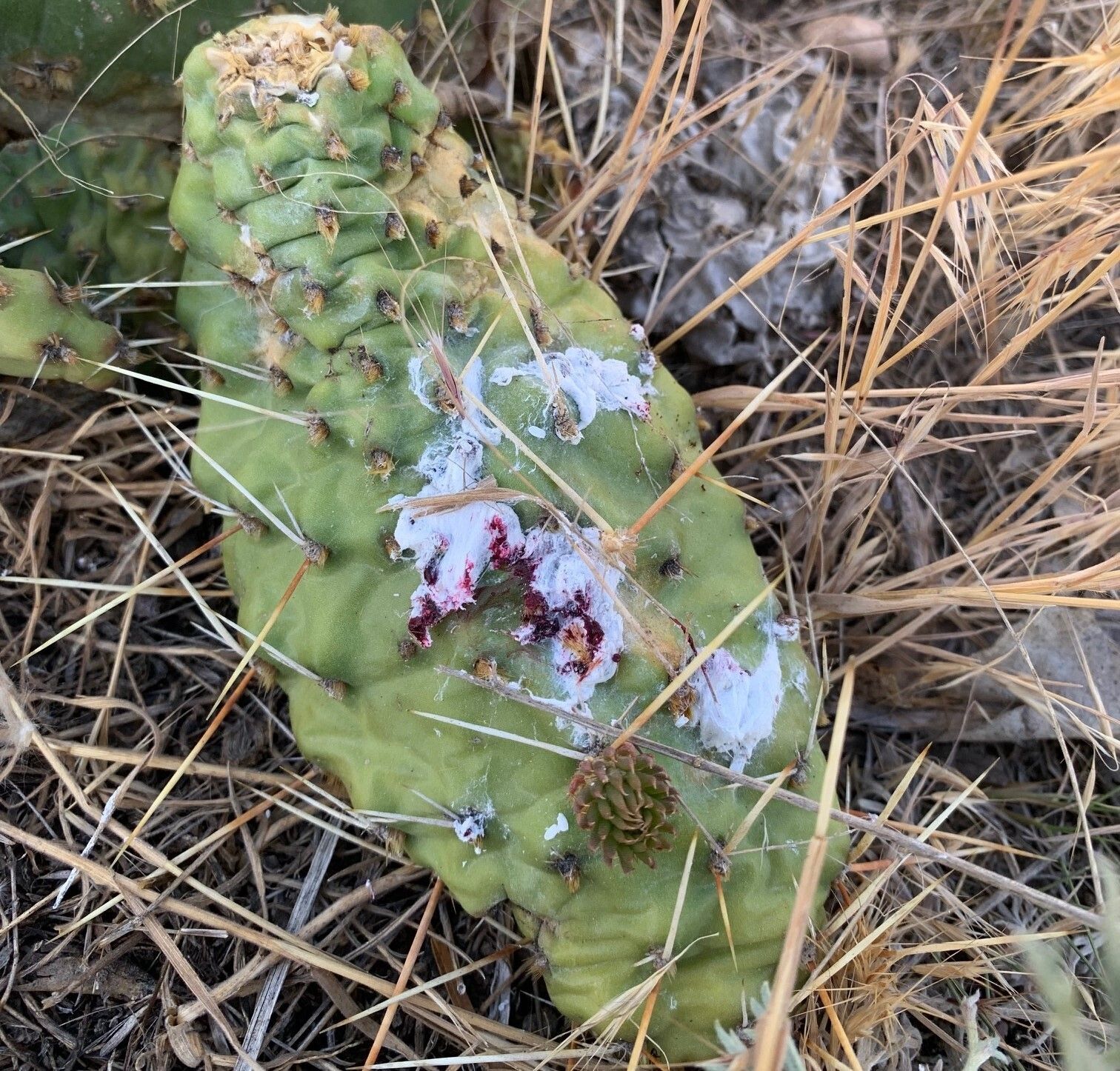
I recently traveled with the Statewide Arboretum staff to Scottsbluff for NSA’s annual Wildflower Week events. While there, I decided to spend a free morning walking the Scottsbluff Monument Valley Pathway, along the North Platte River. This beautiful trail is directly adjacent to the river and provides great bird watching and views of the surrounding bluffs. It also has an abundance of plant life, which was why I was there!
About a half mile into walk, I noticed plains prickly pear growing on the dry edges of the trail. In several of these cactus patches, I observed white blobs that were adhered to the cactus. Having attended graduate school in the cactus-covered deserts of Arizona, I recognized these blobs right away as Cochineal scale insects. However, seeing them on the prickly pear that morning was surprising to me, as I didn’t realize that they are also found in Nebraska. A bit of internet research revealed that the range of Cochineal (Dactylopius coccus) is rather large, with iNaturalist reporting citizen science observations in Colorado, Kansas, South Dakota and Nebraska.
Cochineal scale is a fascinating insect that feeds on sap of Opuntia genus cactus, of which there are many different species. Nebraska has three native species of prickly pear cactus: plains prickly pear (Opuntia polyacantha), bigroot prickly pear (Opuntia polyacantha) and little prickly pear (Opuntia fragilis). Cochineal insects are notable for their white waxy covering that protects them from the sun and water loss in dry environments. Even more notable is their body’s ability to internally produce a red chemical called carminic acid. When the insects are squished, a deep red color is expelled. This colorant has been used by indigenous cultures of the Americas for centuries as a natural red dye for cloth, paint and food—and it's still used today as a red dye in foods like yogurt, candy, kids' snacks, juice and ice cream, as well as in products like lipstick, shampoo, lotion and eye shadow (look for the word "carmine" in the ingredients list).
This short video by Nebraska Public Media details some of this interesting history and provides more information on this incredible Nebraska insect and its relationship to our native prickly pear cactus.


